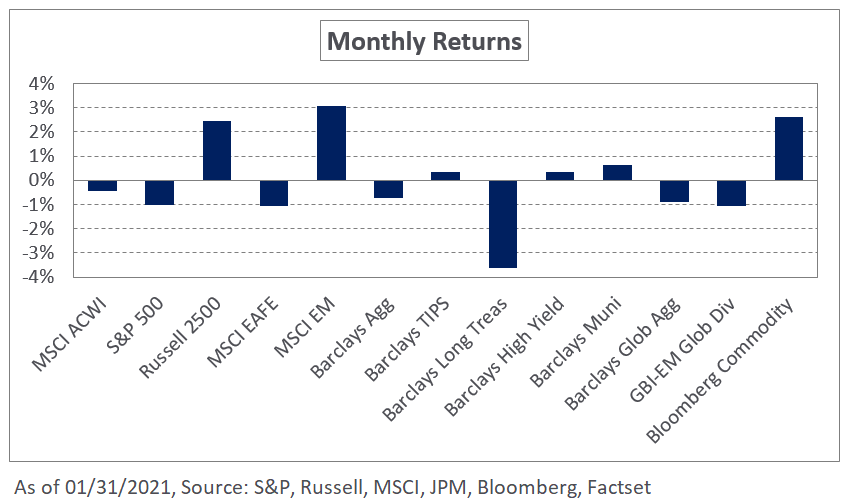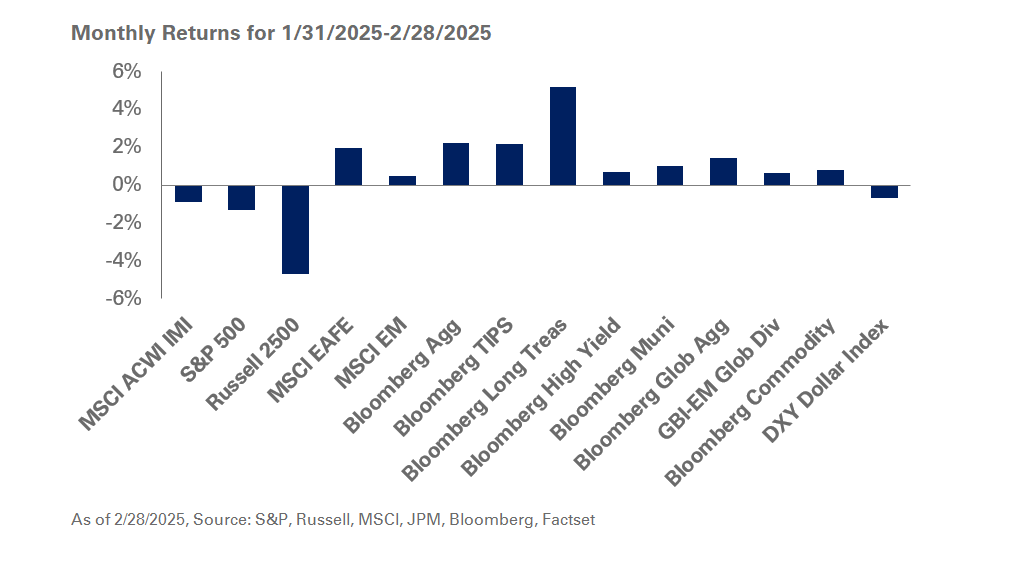After a strong start to the year, developed market equities subsequently reversed course, ending January in the red. In the U.S., the S&P 500 Index fell 3.3% in the week ended January 29, pushing the monthly return into negative territory. The market volatility was fueled by a short squeeze in a number of heavily-shorted names, including GameStop. Driven by retail investors, the trading frenzy caused significant pain for market participants with dedicated single-stock short positions. As a result, many hedge funds reduced their gross exposures, with the de-leveraging likely further pummeling prices. Still, positive news around COVID-19 vaccines, improving economic data, and expectations of further stimulus continued to prop up overall market sentiment, especially in emerging Asia, leading emerging market equities to gain 3.1% last month, according to the MSCI Emerging Markets Index.
In rates, global yields were up in January. In the U.S., the yield curve modestly steepened with the 10- and 30-year Treasury yields rising 17 and 20 basis points, respectively. As a result, rate-based indexes fell, with the Barclays U.S. Treasury and Barclays Long Treasury Indexes down 1% and 3.6%, respectively. While equities and rates saw an uptick in volatility, credit spreads were largely unchanged in January.
Meanwhile, within real assets, WTI Crude Oil gained 7.8% last month, underscoring the broad reflation sentiment and an unexpected move by Saudi Arabia to cut output by a million barrels per day in February and March.
The recent market volatility serves as a reminder of the fragility and uncertainty surrounding the current macroeconomic backdrop. To that end, we encourage investors to be disciplined and mindful of market liquidity. Further, we advocate for investors to maintain a dedicated allocation to Treasuries to support liquidity levels and cash-flow needs as potential market dislocations can introduce bouts of illiquidity across publicly-traded markets.




